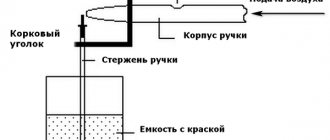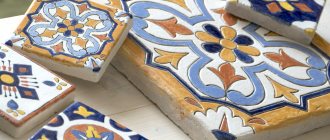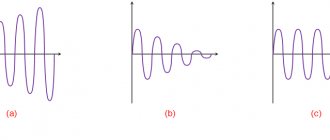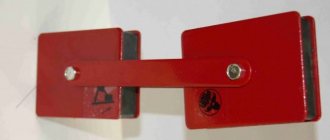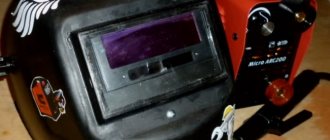DIY water-repellent impregnation methods
- The first way is using available chemical solutions. With this processing of matter, its threads become impermeable to liquid, but the gaps between them are not filled. This is how denser waterproof fabrics are processed, thereby increasing their fire resistance. A well-stretched tent made of impregnated material with a roof angle of at least 35° does not let raindrops through. But if things lying in the tent come into contact with the fabric, then water penetrates through the pores and they get wet. Impregnation should be renewed every year if the travel season is quite long and there is a lot of rain. Ropes and slings can also be impregnated using chemical methods so that they also do not get wet or rot.
- The second method is water-repellent impregnation of textiles with an oil or wax-like composition that fills all gaps. As a result, it becomes completely impenetrable to air and water, but at the same time, it becomes heavy and flammable, and at low temperatures it is not flexible. Sparks can easily burn through it or even cause a fire. Materials used mainly for the floor of a tent, the lining of pack bags and bags, and sometimes backpacks are subjected to this method of processing. When handled with care, this waterproof fabric retains its waterproof properties for several years.
- The third (intermediate) method is to apply a composition containing fish or wood glue or casein. As a result, the material becomes dense and suitable for making both clothing and tents, as well as lightweight flooring (for example, a recipe with wood glue).
Special impregnations
They are produced either in the form of aerosols or in the form of rinses.
- It is better to treat equipment and shoes with aerosols. The spray is not easy to distribute evenly and there is a risk of leaving a stain. Such products often have an unpleasant odor; it is better to leave the treated item to dry in a well-ventilated area.
- Rinse liquids are much more convenient. After washing the product, the product is poured into the compartment of the washing machine intended for rinse aid, and another cycle is started.
Before washing, be sure to remove any remaining cleaning products from the washing machine - powders clog the pores of the membrane; special shampoos are used for it. And yet, you will have to come to terms with the fact that membrane products cannot be pressed at high speeds. Water will drip from the washed item for some time.
After treatment, the item will stop absorbing water, dirt and dust for a couple of months. As soon as you feel that it has become heavier, dirty, and starting to get wet - that’s it, it’s time to renew the impregnation.
Available Chemical Waterproofing Compounds
- Dissolve 500g of laundry soap in 5l of boiling water. Soak the material well, then squeeze lightly. Without drying it, immerse it for a while in an aqueous solution of ordinary (potassium-aluminum) alum (500g per 5l, and for stronger impregnation you can take 1000g). Dry without wringing.
- Dissolve 450g of laundry soap in 4.5 liters of boiling water, add 250g of laundry soda and 450g of rosin powder. The processing procedure is the same. Both of these methods are good, but the first is simpler and faster (suitable, in particular, for fishing nets).
- One of the simplest and most effective methods, which also makes it possible to make waterproof fabric with fire-resistant properties, is impregnation with alum and lead sugar (lead acetate). In one 3-liter container, 150 g of lead sugar is diluted, in another, in the same volume, 150 g of ordinary alum (or another option - 75 g of both products for the same amount of water). They need to be allowed to settle and drained together, separating them from the sediment. Let the resulting emulsion stand for several hours, and then, when the liquid becomes clear, drain it, separating it from the sediment. Soak the textiles in this liquid overnight or even a day, and then dry without wringing. Since the composition is poisonous, the dishes should be thoroughly boiled and washed.
- Dissolve 400g of alum in 2.25 liters of boiling water, add 9.125l of H₂O at room temperature. Soak the textiles in this mixture for 24 hours, and then squeeze it out lightly and immerse it for 5-6 hours in another mixture: 225 g of lead sugar, poured 9.125 liters of warm water.
- Dip the material into a 40% solution of laundry soap, wring it weakly and immerse it in a 20% solution of copper sulfate. Dry without wringing. The material is painted green.
- In a combination of 285 g of quicklime and 115 g of alum per 12.3 liters of H₂O, keep for 12 hours, and then dry it without squeezing. This material is used for tents.
- Soak textiles, ropes, slings, nets for 4-5 days in a solution of copper sulfate (300g per 12l H₂O), then dry and rinse in soap emulsion. This will protect them from rotting and give them special strength.
Oil and paraffin waterproof formulations
- Dissolve 300g of paraffin, 300g of petroleum jelly, 100g of glycerin in 2 liters of gasoline (heat in a water bath). Immerse the fabric in the hot solution for 25-30 minutes. During processing and when drying, keep away from fire.
- Heat 1 kg of drying oil and 200 g of paraffin or wax over a fire until they dissolve. Constantly heating this mixture, but not bringing it to a boil, coat the tent, especially its seams, with a wide brush, and then dry it.
- 7.5 kg of linseed oil and 300 g of wax (or 2,450 kg and 80 g) are boiled for 2 hours. The mixture is intended for water-repellent impregnation of tarpaulin.
- Boil 150g of litharge (lead oxide), 130g of umber and 11l of linseed oil with constant stirring for 2 hours, and then spread the hot mixture onto the stretched canvas.
- Mix talc with crude petroleum jelly in equal proportions, spread on fabric (coarse canvas, canvas) and rub in well.
- Rub the paraffin into a cloth stretched on a smooth surface (table, etc.), and then iron it with an iron. But another method is more effective: dissolve 450-500 grams of paraffin in 3.8 liters of turpentine, heat the turpentine in a water bath, then pour in the melted paraffin. Apply the hot mixture to the stretched fabric.
- A good result is achieved by rubbing boiled linseed oil. This should be done with your hands, and very energetically. To treat 1 m² you need about 0.25 liters of oil. It must be dried in the fresh air until the smell disappears.
- To get waterproof felt, you need to prepare a mixture of 70g linseed oil, 70g kerosene, 30g turpentine and 10g wax, heat it in a water bath, and then apply a thin layer to the felt and level it until it is saturated. It takes quite a long time to dry the felt.
- It is not recommended to use kerosene and gasoline for water-repellent impregnation of fabric, since it becomes low-elastic.
How to make your own fabric waterproof?
Waterproof fabric for hunter's clothing and equipment is not a luxury, but a necessary attribute. You can make waterproof fabric yourself, and then use it to sew a tent, a hunting backpack, or a raincoat. You can impregnate fabric with water-repellent compounds in several ways: chemical compounds, wax, paraffin, oil solution, casein, carpentry glue, fish glue, etc.
Chemical compositions
Fabric after chemical treatment does not become completely waterproof. That is, pores remain between the fibers, allowing the fabric to “breathe”. But the threads themselves do not absorb moisture. Therefore, for better waterproofing, it is recommended to use thick fabric. When installing a tent made of “chemical” fabric, the angle of inclination of the walls should be more than 35° - in this case, water will roll off. However, other things should not be adjacent to the walls, otherwise they will absorb moisture through micropores between the fibers. By the way, after treatment with chemical compounds, the fabric becomes more fire resistant. Chemical compositions are excellent for impregnating ropes and slings. This method does not weigh down the fabric, but to maintain the waterproof effect, the fabric must be treated annually.
- Impregnation with lead acetate and alum is considered the most effective. The fabric does not rot for a long time and almost does not burn. Separately, 75-150 g of alum and 75-150 g of lead acetate are diluted in three liters of water. The proportions should be the same. When the solutions have settled, pour them into one container, separating them from the sediment, and settle them again. Attention! The composition is unsafe, so we take precautions. The selected fabric is soaked in this solution for about a day. Then we take out the fabric and, without squeezing it, hang it to dry.
- Dissolve half a kilo of laundry soap in five liters of hot water. Soak the fabric in soapy water. While it is soaking, dissolve 0.5-1 kg of potassium-aluminum alum in five liters. We take the fabric out of the soapy solution, squeeze it lightly and place it in the alum solution. After 12 hours we take it out and dry it without squeezing it.
- To make slings, ropes, and fishing nets waterproof, it is enough to keep them in a solution of copper sulfate for five days. Solution: 300 g of vitriol per 12 liters of water. Then we dry the ropes and rinse them additionally in soapy water. After chemical treatment, the products become more durable and do not rot.
- Dissolve 450 g of rosin, 250 g of soda and 0.5 kg of laundry soap in five liters of hot water. We soak fabrics, ropes and dry them.
- Dissolve 450 g of alum in 2.5 liters of hot water. Then add another 9.5 liters of water at room temperature. We soak the fabrics for about a day. We take out the trace wrung out. Then place 220 g of lead sugar (lead acetate) in nine liters of water for 6 hours. Dry it.
- For tents: dissolve 110 g of alum and 280 g of quicklime in 12 liters of water. Soak the fabric for 12 hours. Dry without squeezing.
- The following composition makes the fabric waterproof and dyes it a protective green color. Place the fabric in a 40% solution of laundry soap for several hours. Squeeze it lightly and place it in a 20% solution of copper sulfate. Dry the fabric without wringing.
Impregnation with wax, paraffin, oil
The plastic composition not only covers the threads, but also fills the space between them. The fabric becomes a single canvas that does not allow either water or air to pass through. It hardens in winter. Since it becomes very heavy, such fabrics are used mainly for sewing or external lining of backpacks, bags, sleeping bags, and for the floor of a tent. When using oils, the fabric becomes a fire hazard. The protective coating lasts for several years.
- The most basic way is to stretch the fabric on a table and rub it with paraffin. To better fill the pores, iron it with an iron.
- A more effective way: dissolve 0.5 kg of paraffin in 4 liters of turpentine. To do this, turpentine is heated in a water bath and molten paraffin is poured into it. While the mixture is hot, cover the fabric with it.
- Dissolve 100 g of glycerin, 300 g of petroleum jelly and 300 g of paraffin in two liters of gasoline. Soak the fabric in the solution for half an hour. When impregnating and drying, beware of fire!
- Place 130 g of umber and 150 g of lead oxide (lightweed) in 11 liters of linseed oil and cook for two hours, stirring regularly. Rub the hot mixture onto the stretched fabric.
- Composition of impregnation for felt: mix 10 g of wax, 70 g of kerosene, 70 g of linseed oil, 30 g of turpentine. Heat the mixture in a water bath and apply a thin layer to the felt. Felt takes a long time to dry.
- Place 200 g of wax (or paraffin) in a metal container and pour in 1 kg of drying oil. Gently heat until everything is dissolved. Without bringing it to a boil, but maintaining a high temperature over low heat, dip a wide brush into the mixture and coat the fabric. This composition is ideal for treating tent fabric, especially seams.
- Linseed oil preserves fabric well. It is boiled. Then rub the fabric vigorously with your hands while it’s warm. Consumption: 0.25 l of oil per 1 m₂ of canvas. Dry in the fresh air until the smell disappears completely.
- To make rough canvas or canvas waterproof, just mix Vaseline and talc in equal proportions and rub the fabric thoroughly.
- To impregnate tarpaulin fabric, prepare the following composition: boil 300 g of wax in 7.5 kg of linseed oil for two hours.
Adhesive compositions
Impregnations made from casein, fish glue and wood glue are suitable for impregnating clothing and tents. The fabric becomes dense, but quite light.
- Soak the fabric in a warm solution consisting of 1 liter of water, 10 g of potassium dichromate, 10 g of acetic acid and 100 g of wood glue. After soaking, hang the fabric out to dry without wringing it out.
- In a liter of warm water, dissolve 10 g of soap made from animal fats, 20 g of fish glue and 40 g of alum. Soak the fabric, wring it out and rinse in a 4% solution of lead acetate.
- Separately dissolve 50 g of fish glue, 10 g of soap in 200 ml of warm water, 10 g of alum in 300 ml of water. Then mix everything and heat it up. The composition is applied with a clothes brush to the stretched fabric from the inside until the outside becomes wet.
- Separately dissolve 12 g of slaked lime and 0.5 kg of milk casein in 0.5 liters of water; in 3 liters of water 25 g of neutral soap. Mix the solutions. After soaking, the fabric is dried. Then it is additionally soaked in a 2% solution of aluminum acetate (2 g per 100 ml of water). After this, take out the fabric and rinse it in hot water. Dry it.
Recommendations
To avoid fire when heating flammable substances (turpentine, gasoline, etc.), use a water bath. That is, the container with the composition is placed in hot water, and not on an open fire!
- Technical paraffin can be replaced with ordinary household candles.
- To impregnate a tent, the protective composition can be made less concentrated than for clothing fabric.
- To protect the seams of the tent, it is enough to coat it with rubber glue.
- It is better to dissolve the soap in hot water, after cutting it into small pieces or grinding it.
- When immersing fabrics, ropes, slings, nets in solutions, you must ensure that they are completely saturated. To do this, it is recommended to wear rubber gloves and squeeze the fabric with your hands to remove air bubbles.
Adhesive and casein waterproof formulations
- Prepare three solutions (50g of fish glue in hot water; 10g of alum in 0.3 liters of H₂O; and grams of white soap in 0.15-0.20 liters) and mix together. Apply the heated mixture to the fabric with a rag or brush. For clothing, you can take equal parts of all three ingredients. This composition is applied from the inside until the outside becomes wet.
- Dissolve 40g of alum, 20g of fish glue and 10g of white soap in 1 liter of H₂O, wet the cloth, squeeze and rinse in a four percent solution of lead acetate.
- To a mixture of 500g of milk casein, 12g of slaked lime and 0.5l of water, add a hot aqueous solution of 25g of neutral soap per 3l. The fabric must be thoroughly soaked in this liquid, dried, then placed for a while in a 2% aqueous solution of aluminum acetate (2 grams per 0.1 liter). Take it out, then put it in boiling water and then dry it.
- Soak the fabric in a hot aqueous solution consisting of 100 g of wood glue, 10 g of acetic acid, 10 g of potassium dihydroxide, per 0.9 liters of hot water. Dry without wringing.
Types of water repellents
They can be made on different bases. Several types are described below.
Water-based impregnations
It is mainly produced as an emulsion. It is very easy to use, you just need to spray it on dry shoes.
You might be interested in Description of jute, composition and production technology of the material
Attention! Aqueous impregnation does not contain hazardous substances and does not have a pungent odor.
Casein-based impregnation
This solution consists of different fats and contains casein. Its advantage is that it seals fabrics of any density. Having these properties, it is perfect for processing camping tents, bags and equipment.
Jacket processing
Attention! Before work, be sure to degrease the surface of the product. Otherwise, the impregnation will not protect fully.
To understand how to make waterproof fabric at home, you need to look at various forums on the Internet. The most popular and oldest option is to coat the product with a composition that contains fish glue. This must be done extremely carefully so as not to get on excess areas of the fabric or on your hands.
What is waterproof
The word “waterproof” translated from English is more of a concept than a simple definition. The situation looks approximately the same as with the word “Xerox”, when in literal translation it is just the name of the company, but the practice has developed when this word is understood as any copying machine. And even a verb appeared - to photocopy, that is, to copy. Same here: Waterproof - adjective: waterproof, waterproof, waterproof. Waterproof - noun: a waterproof cloak (cloak) like a Mackintosh. Waterproof - verb: to make waterproof.



